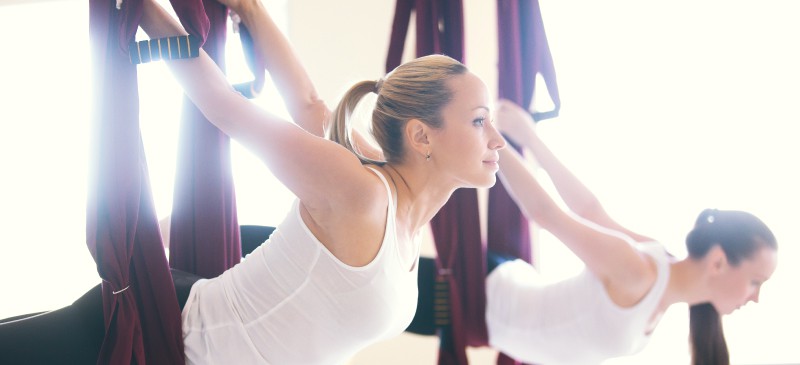Axe content is medically reviewed or fact checked to ensure factually accurate information. With strict editorial sourcing guidelines, we only link anti gravity yoga for back pain academic research institutions, reputable media sites and, when research is available, medically peer-reviewed studies. The information in our articles is NOT intended to replace a one-on-one relationship with a qualified health care professional and is not intended as medical advice.

This article is based on scientific evidence, written by experts and fact checked by our trained editorial staff. Our team includes licensed nutritionists and dietitians, certified health education specialists, as well as certified strength and conditioning specialists, personal trainers and corrective exercise specialists. Our team aims to be not only thorough with its research, but also objective and unbiased. Aerial Yoga: Better Than Regular Yoga? Aerial yoga is a relatively new type of yoga that originated out of New York in 2007.
1991 that ultimately became the inspiration for creating this new yoga brand. Ultimately, the use of silk hammocks inspired Harrison to create a brand that incorporates acrobatics, artistic sports and contemporary dance. And as a Tony Award winning aerial yoga choreographer and long-time fitness expert, Harrison has become the expert for aerial performances at such venues as the Academy and Grammy Awards, as well as presidential inaugurations. Yoga was a natural addition to his performance warm-ups. And thus, aerial yoga was born. But what can it do for you?
The simplest definition of aerial yoga is a yoga practice that combines traditional yoga postures and Pilates exercises with the use of a silk hammocks to help aid and support the poses. This is why this type of yoga practice is also call anti-gravity or suspension yoga because for much of the session, you will be suspended off the ground by the hammock. For those with a solid yoga practice, aerial yoga provides a new take on the traditional yoga practice as well as assistance during more challenging postures to help improve alignment and flexibility. For beginners, it offers a level of support in each pose to help students learn and practice proper alignment as strength improves.
There are countless options when it comes to the types of aerial yoga classes. There are those that focus on high flying tricks and those that are slower and more meditative. And just like traditional yoga practices, aerial yoga incorporates breath work, a cool down like savasana as well as spirituality or chanting, depending on the studio and individual class. So, what is aerial yoga good for?